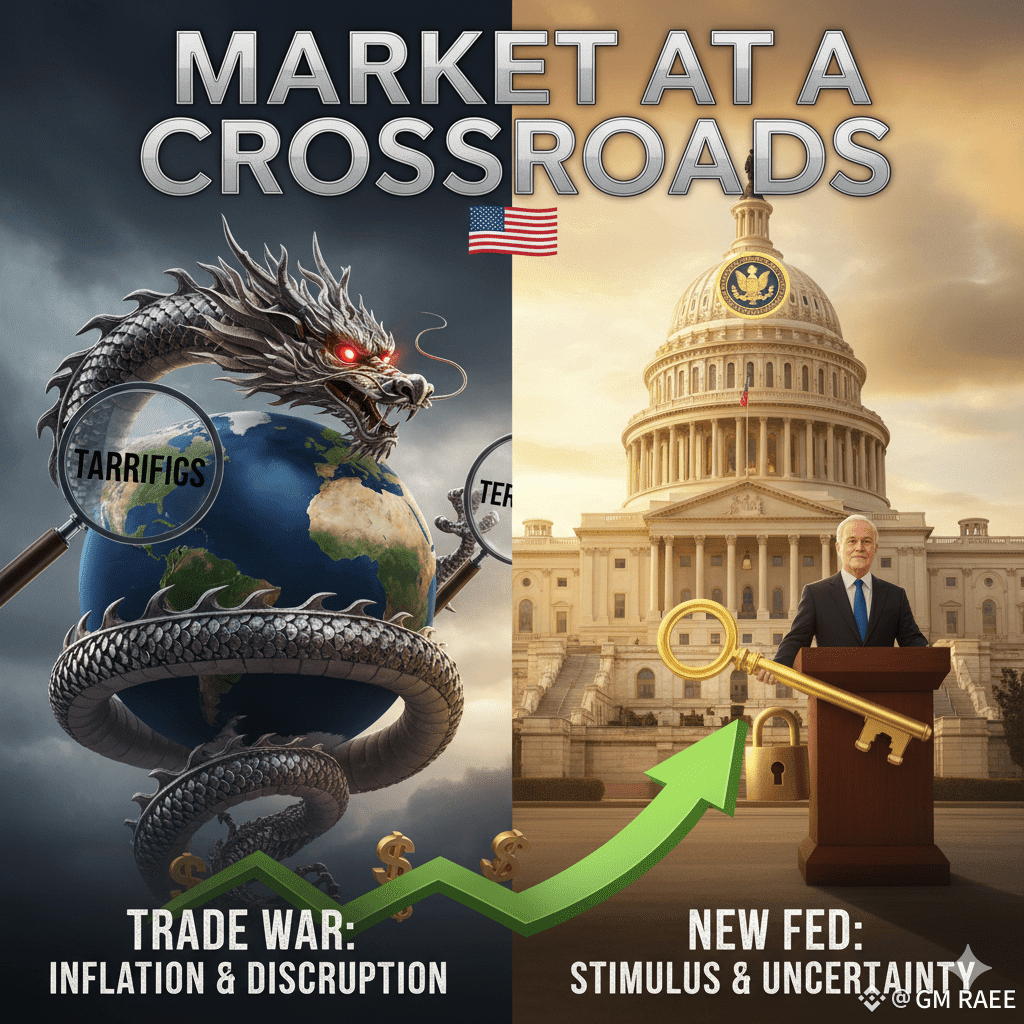The current financial headlines are dominated by a dual narrative: the escalating trade war between the US and China and the highly anticipated decision on the next US Federal Reserve Chair. These two forces are set to clash, creating a volatile and uncertain environment for global markets.
Here is an article examining the implications of both events, focusing on the potential economic pros and cons.
I. The New Front in the US-China Trade War: Tariffs and Rare Earths
The trade conflict has sharply escalated, moving from generalized tariffs to a strategic battle over critical resources and technology.
China has tightened export controls on Rare Earths (essential minerals for high-tech, defense, and green energy) and related processing technology. In response, President Trump has threatened a "massive increase of Tariffs" on Chinese goods.
The Trade Conflict: Pros and Cons
Pros (Potential Benefits for the US)
* Forcing Supply Chain Resilience: China's use of Rare Earths as a bargaining chip serves as a wake-up call, accelerating US and allied efforts to build independent and secure supply chains. This long-term push to diversify away from China could reduce strategic vulnerability.
* Protecting Domestic Industries: Tariffs offer immediate protection to specific domestic industries from foreign competition, which may allow for temporary job creation and investment in those sectors within the US.
* Gaining Leverage: The threat of new, massive tariffs provides the US administration with maximum leverage to demand significant, structural concessions from Beijing on trade practices and intellectual property rights.
Cons (Negative Market and Economic Impacts)
* Inflationary Pressure on Consumers: Tariffs are taxes on imports, which are largely passed on to American businesses and, ultimately, consumers. This will exacerbate current inflationary pressures by raising the cost of everything from electronics to industrial components.
* Supply Chain Disruption and Cost Spikes: China's rare earth controls will immediately disrupt global manufacturing. Companies dependent on these materials—from defense contractors to electric vehicle (EV) manufacturers—will face material shortages and sharply higher input costs.
* Global Economic Slowdown: A full-blown trade war with escalating tariffs harms corporate earnings for multinational companies and reduces the volume of global trade, increasing the risk of a worldwide economic slowdown or recession.
II. The Fed Chair Shortlist: Hope for Stimulus
In stark contrast to the deflationary fear of the trade war, the shortlist for the next Federal Reserve Chair offers the prospect of easier monetary policy, which is typically a boost for financial markets.
The five contenders—Bowman, Waller, Hassett, Warsh, and Rieder—are being considered to replace Jerome Powell. Critically, several of the frontrunners are considered "doves," who support or have recently supported interest rate cuts, aligning with the administration's stated goals.
The Fed Choice: Pros and Cons
Pros (Market-Stimulating Effects)
* Promise of Lower Rates: The general dovish tilt of the shortlist suggests that the next Fed Chair will be more open to cutting interest rates. Lower rates make borrowing cheaper for companies and consumers, stimulating investment, potentially boosting corporate earnings, and leading to an immediate stock market rally.
* Increased Liquidity: An easier monetary policy stance pumps liquidity (cash) into the financial system, supporting asset prices and reducing the cost of funding for the US Treasury.
Cons (Risk to Long-Term Stability)
* Heightened Inflation Risk: Rate cuts, while stimulating, are dangerous when coupled with the inflationary effects of tariffs (which raise import costs). A politically-driven Fed could cut rates too quickly, creating a scenario of Stagflation—low growth coupled with high, persistent inflation.
* Erosion of Credibility: If the new Chair is perceived as prioritizing political expediency (rate cuts) over the Fed's dual mandate of price stability and maximum employment, it will severely damage the institution's independence and long-term credibility. This lack of faith could cause investors to demand a higher risk premium, leading to spikes in long-term bond yields.
Market Outlook: The Tug-of-War
The financial market is now in a precarious tug-of-war.
On one side, the trade war acts as a powerful brake, threatening to raise costs and slow global growth. On the other, the new Fed leadership promises to step on the monetary accelerator with rate cuts.
* Short-Term: The hope for cheap money from a dovish Fed will likely provide a floor for the stock market, cushioning the blows from the trade war. Sectors reliant on technology and global supply chains will remain highly volatile.
* Long-Term: The risk is that the "dovish" policy will be forced to fight the inflation created by the "tariffs." If the new Fed Chair cannot credibly manage the combination of trade conflict and political pressure, the long-term outlook will shift toward higher inflation and greater instability.
Investors will be looking for a candidate who is both willing to stimulate the economy and maintain the independence required to fight inflation, a difficult balance in the current highly politicized environment.


